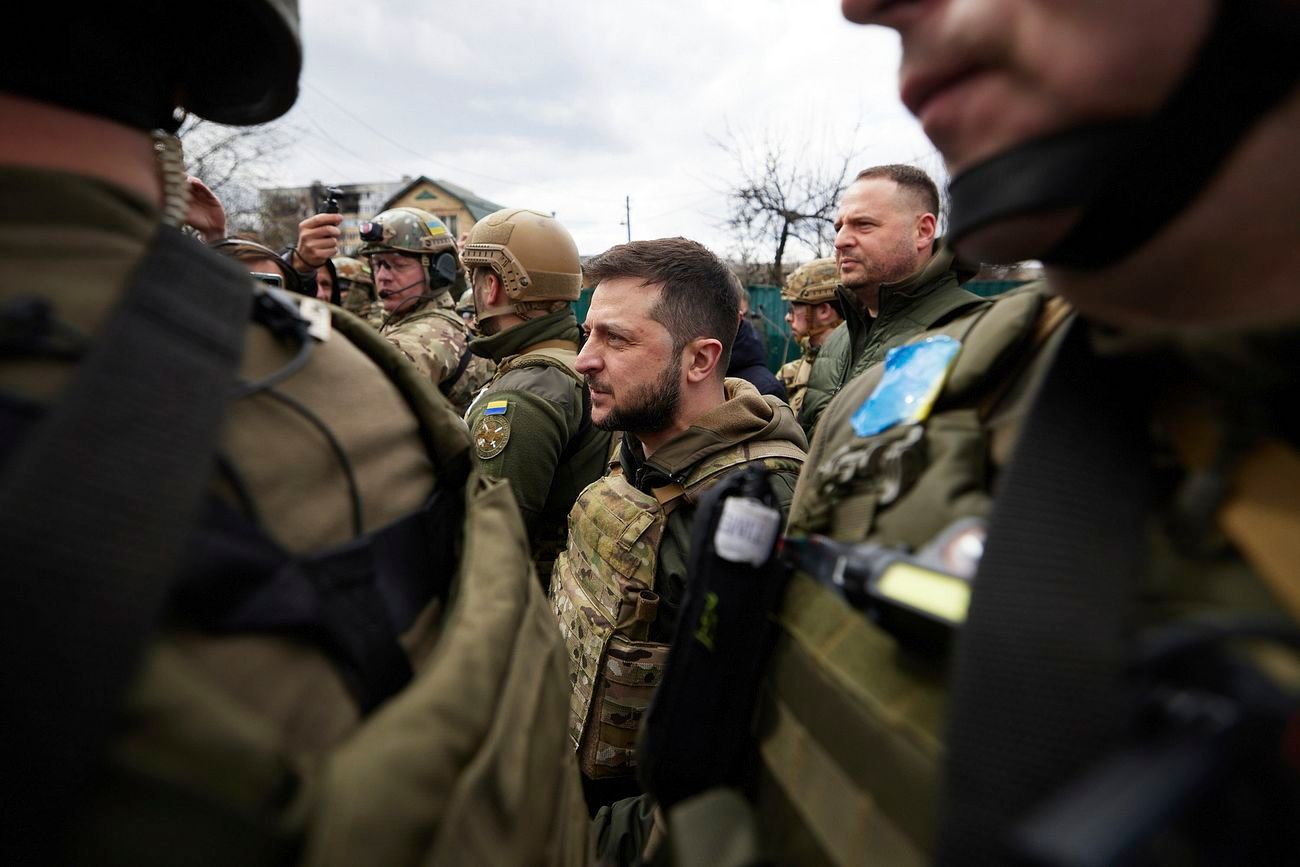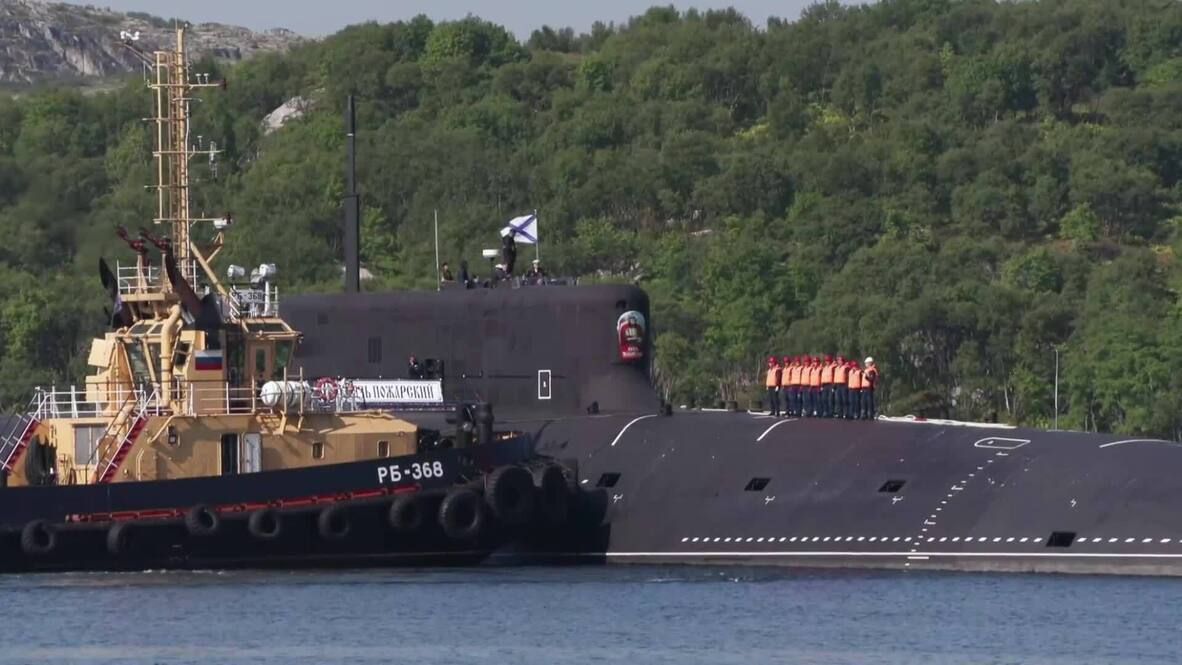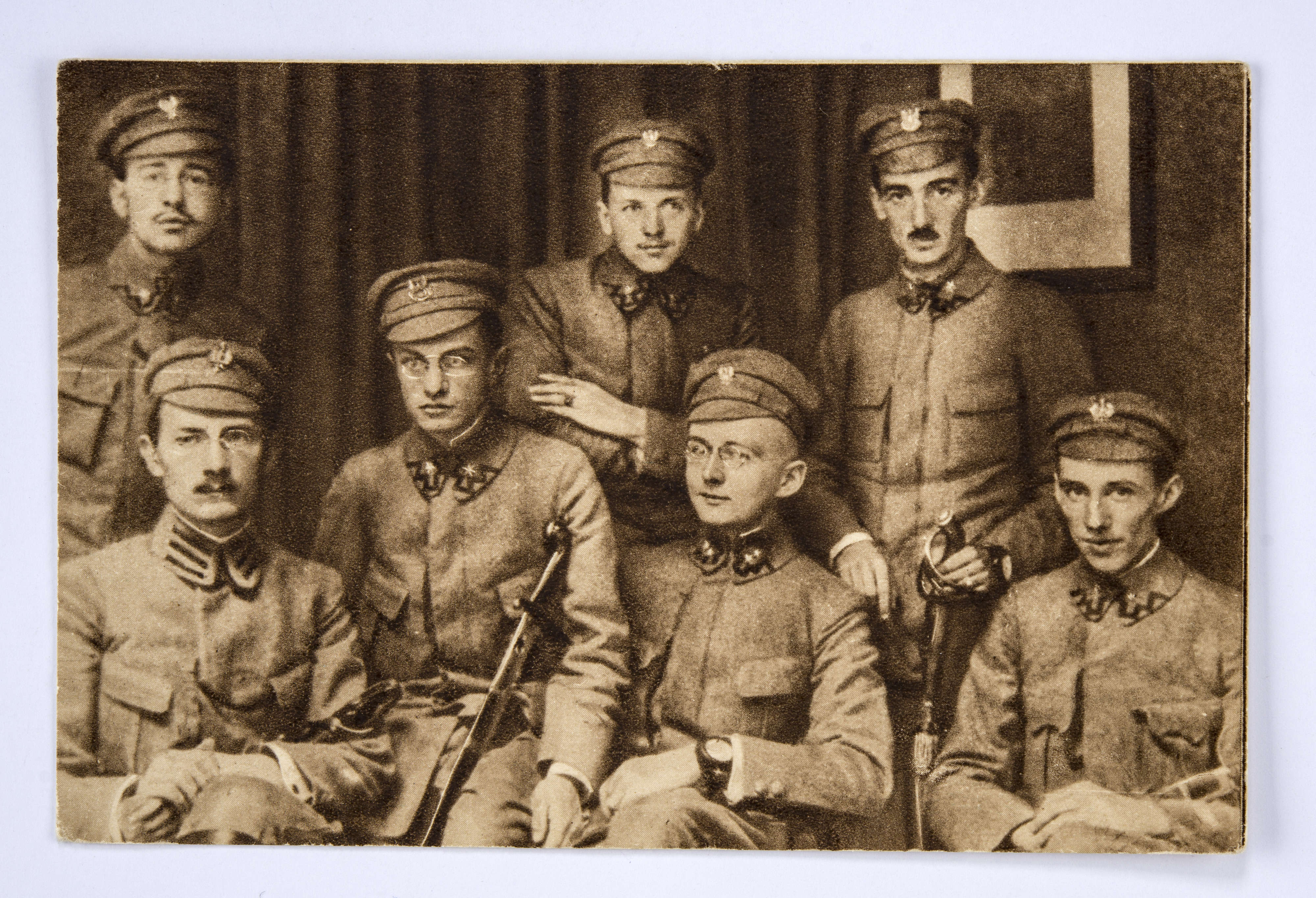
Aron Bell, the youngest and last surviving brother of the legendary Bielski partisans, passed away on September 22 at his home in Palm Beach, Fla., at the age of 98. His death marks the closing chapter of a direct living connection to one of the most remarkable and significant Jewish resistance efforts against Nazi Germany during World War II. Bell’s life story is a testament to extraordinary courage, resilience, and an unwavering commitment to human dignity in the face of unspeakable horror.
His passing was confirmed by his son, Alan, and prompted heartfelt statements from his wife, Henryka Bell, and the Jewish Partisan Education Foundation, which described him as a ‘Jewish partisan hero.’ Mr. Bell, born Aron Bielski, dedicated his later years to ensuring that the legacy of Jewish resistance was never forgotten, dispelling the myth that Jews went passively ‘like sheep to the slaughter.’ His narrative, often shared with schools and organizations, underscored the myriad ways Jews fought back.
The Bielski partisan group, led by his three older brothers — Tuvia, Asael, and Alexander (Zus) Bielski — not only attacked German troops in western Belorussia but also undertook the ambitious and perilous mission of rescuing some 1,200 fellow Jews from near-certain death. Aron Bell’s contributions, though often behind the front lines, were indispensable to this extraordinary endeavor, making his life a powerful chronicle of resistance and survival. This article will delve into the various facets of his remarkable journey.

1. A Life Forged in Stankiewicze: Early Years and Family Roots
Aron Bielski was born on July 21, 1927, in Stankiewicze, a small, rural Belorussian village. He was the youngest of twelve children in the family of David and Beila (Mandel) Bielski. His father was a farmer who milled wheat, and his mother managed their home, which was notably the only Jewish family residence in the village of sixteen houses, located fifteen kilometers from Novogrudok, then part of Poland.
The Bielski farm was situated on the outskirts of the vast Naliboki Forest, a geographical feature that would later become their sanctuary and battleground. Aron cherished these early memories of his Stankiewicze, surrounded by forests, a world he described with vivid detail in his memoirs, ‘Forest Scout.’ He recalled riding his horse through cold night mists and biting winds, becoming intimately familiar with the nocturnal landscapes of the forest, a familiarity that would profoundly shape his future and save countless lives.
He described the sensory experience of the forest: ‘I can even now remember the cold night mists, the cold and sometimes biting night winds through the trees and across the fields… And the smell, the moist, earthy sweet smell of grasses, of the flowers, of the mosses and the ferns, and the damp smell of the earth and the rich smell of the warm-cold soil.’ This deep connection to the natural world of Belarus, a bond forged in childhood, became an invaluable asset when his family’s world was shattered.
Military equipment: EC-130H Compass Call
Contractors: BAE Systems (prime mission equipment), and L3 Communications (aircraft integration and depot maintenance)
Categories: Air Force Aircraft, Air Force Equipment, Military Aircraft, Special Mission Aircraft, Surveillance Aircraft
Get more information about: EC-130H Compass Call

2. The Unthinkable Loss: The Murder of Parents and the Genesis of Resistance
Life in Stankiewicze was forever altered in June 1941, following the German invasion of the Soviet Union, which had by then incorporated Belorussia, now Belarus. Nazi-recruited authorities began to target Jewish families, and Aron’s older brothers, having refused orders to report to the local police, went into hiding. Officers brutally beat their father, David, in an attempt to extract information about his sons’ whereabouts.
Aron himself, then just 14, faced a harrowing interrogation where he was forced to dig his own grave. He lay silently in the pit, refusing to betray his brothers, freezing ‘cold like ice’ but ultimately freed. Later that year, in December 1941, he witnessed the horrific moment his parents were loaded onto a pickup truck from their farm and taken away, subsequently killed in a massacre with many other Jews.
The murder of their parents served as the catalyst for the Bielski brothers to form their partisan brigade. Tuvia, Asael, and Zus initially sought to protect their immediate family and friends, but their mission quickly expanded to providing a haven for other Jews. This personal tragedy ignited a fierce determination within the brothers to resist, turning their grief into a powerful force for survival and rescue.
Military equipment: Atlantic slave trade
Upright: Portuguese Empire,British Empire,Spanish Empire,French colonial empire
Categories: 1525 establishments, 1870 disestablishments, African slave trade, All Wikipedia articles written in British English, All articles needing additional references
Summary: The Atlantic slave trade or transatlantic slave trade involved the transportation by slave traders of enslaved African people to the Americas. European slave ships regularly used the triangular trade route and its Middle Passage. Europeans established a coastal slave trade in the 15th century, and trade to the Americas began in the 16th century, lasting through the 19th century. The vast majority of those who were transported in the transatlantic slave trade were from Central Africa and West Africa and had been sold by West African slave traders to European slave traders, while others had been captured directly by the slave traders in coastal raids. European slave traders gathered and imprisoned the enslaved at forts on the African coast and then brought them to the Western hemisphere. Some Portuguese and Europeans participated in slave raids. As the National Museums Liverpool explains: “European traders captured some Africans in raids along the coast, but bought most of them from local African or African-European dealers.” European slave traders generally did not participate in slave raids. This was primarily because life expectancy for Europeans in sub-Saharan Africa was less than one year during the period of the slave trade due to malaria that was endemic to the African continent. Portuguese coastal raiders found that slave raiding was too costly and often ineffective and opted for established commercial relations.
The colonial South Atlantic and Caribbean economies were particularly dependent on slave labour for the production of sugarcane and other commodities. This was viewed as crucial by those Western European states which were vying with one another to create overseas empires. The Portuguese, in the 16th century, were the first to transport slaves across the Atlantic. In 1526, they completed the first transatlantic slave voyage to Brazil. Other Europeans soon followed. Shipowners regarded the slaves as cargo to be transported to the Americas as quickly and cheaply as possible, there to be sold to work on coffee, tobacco, cocoa, sugar, and cotton plantations, gold and silver mines, rice fields, the construction industry, cutting timber for ships, as skilled labour, and as domestic servants. The first enslaved Africans sent to the English colonies were classified as indentured servants, with legal standing similar to that of contract-based workers coming from Britain and Ireland. By the middle of the 17th century, slavery had hardened as a racial caste, with African slaves and their future offspring being legally the property of their owners, as children born to slave mothers were also slaves (partus sequitur ventrem). As property, the people were considered merchandise or units of labour, and were sold at markets with other goods and services.
The major Atlantic slave trading nations, in order of trade volume, were Portugal, Britain, Spain, France, the Netherlands, the United States, and Denmark. Several had established outposts on the African coast, where they purchased slaves from local African leaders. These slaves were managed by a factor, who was established on or near the coast to expedite the shipping of slaves to the New World. Slaves were imprisoned in trading posts known as factories while awaiting shipment. Current estimates are that about 12 million to 12.8 million Africans were shipped across the Atlantic over a span of 400 years. The number purchased by the traders was considerably higher, as the passage had a high death rate, with between 1.2 and 2.4 million dying during the voyage, and millions more in seasoning camps in the Caribbean after arrival in the New World. Millions of people also died as a result of slave raids, wars, and during transport to the coast for sale to European slave traders. Near the beginning of the 19th century, various governments acted to ban the trade, although illegal smuggling still occurred. It was generally thought that the transatlantic slave trade ended in 1867, but evidence was later found of voyages until 1873. In the early 21st century, several governments issued apologies for the transatlantic slave trade.
Get more information about: Atlantic slave trade
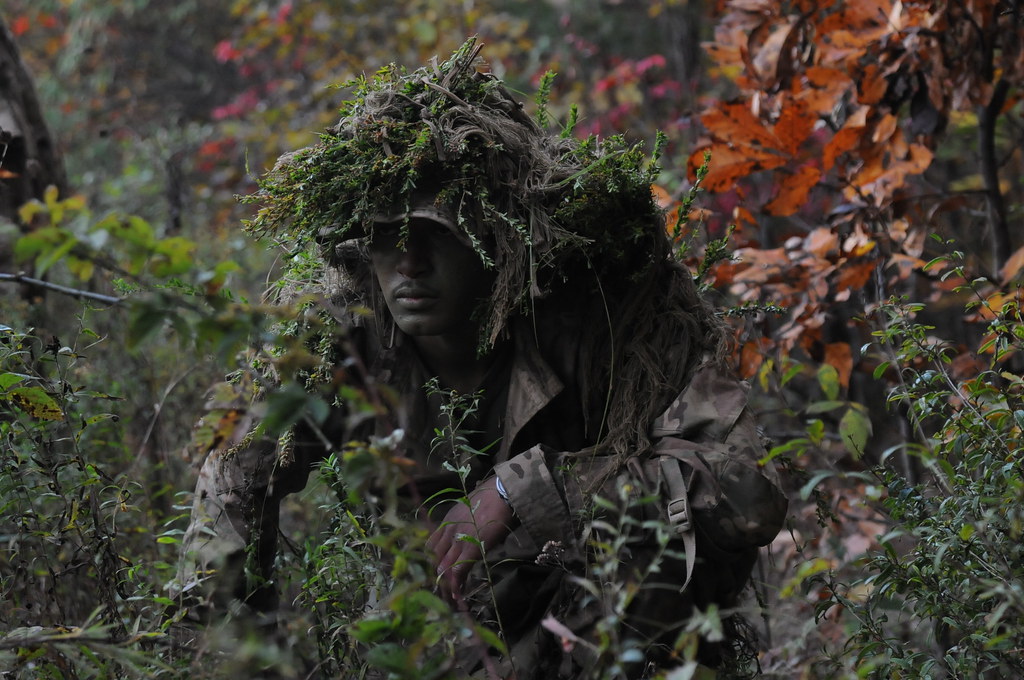
3. A Scout in the Shadows: Aron Bell’s Unique Role in the Bielski Partisans
Despite his youth, Aron played a crucial and dangerous role within the Bielski partisan unit. His brothers, recognizing his slight stature and young age, would not let him fight on the front lines, choosing instead to utilize his unique abilities in less overt but equally vital capacities. Aron served primarily as a scout, venturing out to find sources of food, and as a courier, carrying warnings about German plans to Jews trapped in the nearby Novogrudok ghetto.
His youth and appearance allowed him to move about without drawing the suspicion that would have beenfall older Jews, who were forced to wear the yellow Star of David patch. As he told the Jewish News Syndicate, he was able to ‘walk into places where no Jew could.’ This ability to blend in allowed him to gather critical intelligence and deliver life-saving messages, often encouraging Jews to flee to the woods and join the Bielski encampment.
From the very beginning of their partisan life, Aron was with his brothers and even participated in decision-making, as evidenced by Tuvia Bielski’s unpublished memoirs. While Tuvia expressed concerns about feeding and hiding women, children, and the elderly, ‘little Areleh would listen and smile, saying that we had nothing to fear because we knew the area and the forest better than the Germans.’ His role was indispensable, providing the eyes and ears that kept the ever-moving forest community one step ahead of Nazi detection.
Military equipment: RQ-7B Shadow
Manufacturer: AAI Corp., Textron
Categories: Army Aircraft, Army Equipment, Drones, Marine Corps Aircraft, Marine Corps Equipment
Get more information about: RQ-7B Shadow
4. The Bielski Ethos: Prioritizing Rescue Over Retribution
The Bielski partisans distinguished themselves from many other Jewish and Soviet partisan groups through a unique and deeply humanitarian philosophy championed by Tuvia Bielski. While fighting the Germans was certainly part of their mission, their paramount goal was the rescue of fellow Jews. Tuvia famously declared, ‘I would rather save one old Jewish woman than kill 10 Nazis,’ a quote cited by Peter Duffy in ‘The Bielski Brothers.’
This ethos meant that Tuvia actively sent men into the ghettos, not just to recruit battle-ready fighters, but to bring any Jew, regardless of age, health, or ability to fight, into the forests. Even as he desperately needed more partisans for combat, he welcomed as many Jews as possible to his wooded camp, building a community rather than solely a fighting unit. This commitment to ‘collective survival’ set them apart.
The group provided a haven for the vulnerable — women, children, and the elderly — offering them a chance at life when all other avenues were closed. This dedication to rescue above all else made the Bielski partisans ‘one of the most significant Jewish resistance efforts against Nazi Germany,’ as recognized by the U.S. Holocaust Memorial Museum. Aron Bell’s role in conveying warnings was fundamental to this rescue mission, directly enabling many to escape the ghettos and find refuge with his brothers.
Military equipment: Deep Submergence Rescue Vehicle – DSRV
Manufacturer: Lockheed Missiles and Space, Co., Sunnyvale, CA.
Ships in class: Mystic (DSRV 1), No homeport
Avalon (DSRV 2), No homeport
Categories: Navy Equipment, Navy Ships and Submarines, Ships and Submarines, Special Mission Ships and Submarines, Submarines
Get more information about: Deep Submergence Rescue Vehicle – DSRV

5. “Jerusalem in the Forest”: Building a Sanctuary Amidst Chaos
As more Jews answered the call to flee to the woods, the Bielskis established a sophisticated, nomadic encampment. This ‘forest village,’ as it came to be known, was a remarkable feat of organization and resilience, allowing over 1,200 Jews to survive. To avoid German detection and maintain security, the community had to move regularly within the massive Naliboki Forest, a constant logistical challenge.
Within this hidden sanctuary, the Bielskis created a self-sufficient community. According to the Jewish Partisan Educational Foundation, it eventually grew to include a synagogue, a small hospital, a bakery, and even a theater company. This infrastructure supported a diverse population of fighters and non-combatants, all living under the constant threat of discovery but united by the will to survive.
For Aron Bell, this perilous life in the forest, despite its hardships, represented freedom from the ghettos or concentration camps. ‘You saw the sunshine,’ he told the Jewish News Syndicate in 2020. ‘All we needed was food and we won. If you wanted to sleep, you slept. If there was no bed, you slept on the snow.’ It was a testament to human adaptability and the power of communal spirit, often referred to as ‘Jerusalem in the Forest’ by survivors.

6. Guiding Through the Wilderness: Aron’s Deep Familiarity with the Naliboki Forest
Aron Bell’s intimate knowledge of the Naliboki Forest was not merely a personal comfort but a critical asset for the partisan group’s survival. His childhood on the outskirts of the forest had instilled in him a profound understanding of its terrain, its nooks and crannies, and its hidden pathways. This familiarity was pivotal for his duties as a scout and courier, enabling him to navigate treacherous landscapes undetected.
In his memoirs, ‘Forest Scout,’ Aron vividly recalled the sensations of the forest — the winds, the earthy smells, the cool soil. He noted, ‘I didn’t know, yet, that this deep and natural familiarity with the forest in all its aspects would some day save my life and others lives.’ This inherent connection to their natural surroundings was a distinct advantage the Bielskis held over the German forces, who were often unfamiliar with the dense wilderness.
His ability to traverse the forest, whether on horseback or foot, under the cover of night, allowed for effective reconnaissance, resource gathering, and the crucial delivery of warnings to the ghettos. This personal bond with the wilderness served as a foundational element of the Bielski partisans’ strategy, transforming the forest from a mere hiding place into an active partner in their resistance and rescue efforts.
Military equipment: Deep Drone 8000
Speed:: 3 knots (5 knots optional)
Service:: US Navy
Max Depth:: 8,000 ft
Load:: 300 lbs.
Electronics:: Auto Controls – depth, altitude, heading
Categories: Ships and Submarines, Navy Ships and Submarines, Special Mission Ships and Submarines, Navy Equipment
Get more information about: Deep Drone 8000

7. Confronting “Partisan Bandit Groups”: Trials and Protections within the Forest
Life in the forest, while offering freedom from Nazi tyranny, was far from idyllic or free of danger. Beyond the constant threat of German patrols, the Bielski partisans faced challenges from other groups operating in the region. Tuvia Bielski’s unpublished memoirs recount the growth of ‘so-called partisan bandit groups’ whose unpredictable and often violent actions posed another significant threat to the Bielski community.
These groups were known for their barbaric acts, often robbing partisans of their weapons, watches, and other belongings. Tuvia specifically mentioned an incident where one such group captured a partisan and killed him for refusing to surrender his gun. In another instance, ‘they took my brother Areleh’s semi-automatic gun, his watch and a pistol,’ alongside other partisans like Moshe Resnick.
Despite these external threats, Aron was largely protected by his older brothers within the Bielski camp. He felt safe in their company, understanding that they were a formidable force. His brothers’ protective instincts, coupled with the communal solidarity of the forest village, provided a crucial buffer against these additional dangers, allowing Aron to fulfill his vital, though non-combative, roles. Interestingly, Aron remained silent for three months after the arrest and death of his parents in December 1941, a profound testament to the trauma he endured and the strength he found in his brothers’ presence.

8. Strategic Warfare: The Bielski Partisans’ Tactical Blueprint
The Bielski partisans were not merely a refuge; they were a formidable fighting force employing shrewd and effective tactics against their oppressors. Aron Bell himself, reflecting on their operational methods, articulated their approach with direct clarity: “Look, if you go from one city to the other, somewhere along the line there has to be a bridge, or a train, right? The Nazis used that. You go, you burn up the bridge; you go, you sabotage the railroad. Or if they were accumulating cows, for their food, you’d go and burn up their food. Like a terrorist group: hit and run.” This candid description underscores the strategic sophistication behind their seemingly rudimentary attacks.
Their actions were not random acts of defiance but calculated maneuvers designed to disrupt German supply lines and undermine their control. This included targeted sabotage of infrastructure essential to the Nazi war machine, such as burning bridges and damaging railroads, which impeded troop movements and logistical operations. By destroying accumulated food supplies intended for German forces, the Bielski partisans further complicated the enemy’s efforts, demonstrating a keen understanding of guerrilla warfare principles.
The leadership of Aron’s older brothers, particularly Alexander, or Zus, Bielski, who ran reconnaissance, was instrumental in the execution of these tactics. As Aron noted in the documentary “Resistance: Untold Stories of Jewish Partisans,” his brothers “knew how to survive” and “How to throw fear on people.” These tactical engagements, combined with their primary mission of rescue, enabled the Bielski group to not only protect their growing community but also to actively resist the Nazi occupation, marking them as a distinctive and potent force within the broader partisan landscape.
Military equipment: Modular Tactical Vest
Armor: Level III Kevlar; Level IV SAPI
Manufacturer: Protective Products International
Service: USMC, USN
Categories: Armor, Marine Corps Equipment, Personal Equipment
Get more information about: Modular Tactical Vest

9. Beyond the Forest: Emigration and a New Chapter
By the summer of 1944, when the Soviet Army liberated Belorussia, the Bielski partisan community had swelled to include at least 200 fighters and more than 1,200 rescued Jews. With the immediate threat of Nazi occupation receding, the surviving Bielski brothers faced the daunting task of rebuilding their shattered lives. For Aron, then nineteen, the end of the war brought a new form of solitude, as his older brothers, Tuvia, Zus, and Asael’s wife, Chaya, emigrated to begin anew in other parts of the world.
Aron’s journey after liberation was marked by displacement and continued struggle. He initially remained in Poland as it was absorbed into the Soviet Union, but his path soon led him to a displaced persons camp in Italy. From there, he moved to the newly established state of Israel, where he served five years in the Israel Defense Forces. This period saw him participate in the 1948 Arab-Israeli War, exchanging the forests of Belarus for another theater of conflict, continuing a life forged in battle and self-preservation.
This transition was particularly poignant for Aron, who had lost his brother Asael in battle in Germany in 1944 after Asael was drafted into the Red Army. Having lost his parents and one brother, and with the others seeking new lives abroad, Aron felt profoundly alone. His decision to leave Europe for Israel, and subsequently the United States, was driven by a need to forge his own destiny, away from the shadows of war and the immense grief that accompanied it.
Military equipment: New Zealand
ConventionalLongName: New Zealand
NativeName: native name
CommonName: New Zealand
AltFlag: Blue field with the Union Flag in the top right corner, and four red stars with white borders to the right
AltCoat: A quartered shield, flanked by two figures, topped with a crown
AltMap: A map of the hemisphere centred on New Zealand, using an orthographic projection
MapCaption: Ross Dependency
MapWidth: 250px
OtherSymbol: God Save the King
OtherSymbolType: National anthems of New Zealand
Capital: Wellington
Coordinates: Coord
LargestCity: Auckland
OfficialLanguages: item_style=white-space:nowrap;,New Zealand English,1=English is a {{lang,la,de facto
Group: n
EthnicGroups: item_style=white-space:nowrap;,European New Zealanders,Māori people,Asian New Zealanders,Pasifika New Zealanders,Ethnic groups in the Middle East,1.1% other
EthnicGroupsYear: 2023 New Zealand census
EthnicGroupsRef: refn
ReligionYear: 2023
Religion: item_style=white-space:nowrap;,Irreligion in New Zealand,Christianity in New Zealand,Rātana,group=n
Demonym: item_style=white-space:nowrap;,New Zealanders,Kiwi (nickname)
GovernmentType: Westminster parliamentary system
LeaderTitle1: Monarchy of New Zealand
LeaderName1: Charles III
LeaderTitle2: Governor-General of New Zealand
LeaderName2: Cindy Kiro
LeaderTitle3: Prime Minister of New Zealand
LeaderName3: Christopher Luxon
Legislature: New Zealand Parliament
SovereigntyType: Independence of New Zealand
SovereigntyNote: from the United Kingdom
EstablishedEvent1: Treaty of Waitangi
EstablishedDate1: Thu Feb 06 1840 00:00:00 GMT-0752 (Pacific Standard Time)
EstablishedEvent2: Responsible government
EstablishedDate2: 1856 Sewell Ministry
EstablishedEvent3: Dominion of New Zealand
EstablishedDate3: Thu Sep 26 1907 00:00:00 GMT-0800 (Pacific Daylight Time)
EstablishedEvent4: Statute of Westminster Adoption Act 1947
EstablishedDate4: Tue Nov 25 1947 00:00:00 GMT-0800 (Pacific Standard Time)
EstablishedEvent5: Constitution Act 1986
EstablishedDate5: Thu Jan 01 1987 00:00:00 GMT-0800 (Pacific Standard Time)
AreaRank: 75th
AreaKm2: 263,310
AreaSqMi: 101,665
PercentWater: refn
PopulationEstimate: increase neutral}} {{formatnum:{{data New Zealand
PopulationEstimateYear: currentmonth currentyear
PopulationEstimateRank: 121
PopulationCensus: increase neutral 4,993,923
PopulationCensusYear: 2023 New Zealand census
PopulationDensityKm2: Decimals
PopulationDensitySqMi: Decimals
PopulationDensityRank: 204
GdpPpp: increase $298.93 billion
GdpPppRank: 67th
GdpPppYear: 2025
GdpPppPerCapita: increase $55,450
GdpPppPerCapitaRank: 36th
GdpNominal: increase $248.67 billion
GdpNominalRank: 52nd
GdpNominalYear: 2025
GdpNominalPerCapita: increase $46,013
GdpNominalPerCapitaRank: 23rd
GiniYear: 2022
GiniChange: decrease
Gini: 30.0
HdiYear: 2023
HdiChange: decrease
Hdi: 0.938
HdiRank: 17th
Currency: New Zealand dollar
CurrencyCode: NZD
Iso3166code: NZ
TimeZone: Time in New Zealand
UtcOffset: +12
TimeZoneDst: Time in New Zealand
UtcOffsetDst: +13
DateFormat: abbr
DrivesOn: left
CallingCode: Telephone numbers in New Zealand
Cctld: .nz
Categories: All Wikipedia articles written in New Zealand English, All articles containing potentially dated statements, All articles with dead external links, Archipelagoes of the Pacific Ocean, Articles containing Dutch-language text
Summary: New Zealand (Māori: Aotearoa, pronounced [aɔˈtɛaɾɔa]) is an island country in the southwestern Pacific Ocean. It consists of two main landmasses—the North Island (Te Ika-a-Māui) and the South Island (Te Waipounamu)—and over 600 smaller islands. It is the sixth-largest island country by area and lies east of Australia across the Tasman Sea and south of the islands of New Caledonia, Fiji, and Tonga. The country’s varied topography and sharp mountain peaks, including the Southern Alps (Kā Tiritiri o te Moana), owe much to tectonic uplift and volcanic eruptions. New Zealand’s capital city is Wellington, and its most populous city is Auckland.
The islands of New Zealand were the last large habitable land to be settled by humans. Between about 1280 and 1350, Polynesians began to settle in the islands and subsequently developed a distinctive Māori culture. In 1642, the Dutch explorer Abel Tasman became the first European to sight and record New Zealand. In 1769 the British explorer Captain James Cook became the first European to set foot on and map New Zealand. In 1840, representatives of the United Kingdom and Māori chiefs signed the Treaty of Waitangi which paved the way for Britain’s declaration of sovereignty later that year and the establishment of the Crown Colony of New Zealand in 1841. Subsequently, a series of conflicts between the colonial government and Māori tribes resulted in the alienation and confiscation of large amounts of Māori land. New Zealand became a dominion in 1907; it gained full statutory independence in 1947, retaining the monarch as head of state. Today, the majority of New Zealand’s population of around 5.3 million is of European descent; the indigenous Māori are the largest minority, followed by Asians and Pasifika. Reflecting this, New Zealand’s culture is mainly derived from Māori and early British settlers but has recently broadened from increased immigration. The official languages are English, Māori, and New Zealand Sign Language, with the local dialect of English being dominant.
A developed country, New Zealand was the first to introduce a minimum wage and give women the right to vote. It ranks very highly in international measures of quality of life and human rights and has one of the lowest levels of perceived corruption in the world. It retains visible levels of inequality, including structural disparities between its Māori and European populations. New Zealand underwent major economic changes during the 1980s, which transformed it from a protectionist to a liberalised free-trade economy. The service sector dominates the country’s economy, followed by the industrial sector, and agriculture; international tourism is also a significant source of revenue. New Zealand and Australia have a strong relationship and are considered to share a strong Trans-Tasman identity, stemming from centuries of British colonisation. The country is part of multiple international organisations and forums.
Nationally, legislative authority is vested in an elected, unicameral Parliament, while executive political power is exercised by the Government, led by the prime minister, currently Christopher Luxon. Charles III is the country’s king and is represented by the governor-general, Cindy Kiro. New Zealand is organised into 11 regional councils and 67 territorial authorities for local government purposes. The Realm of New Zealand also includes Tokelau (a dependent territory); the Cook Islands and Niue (self-governing states in free association with New Zealand); and the Ross Dependency, which is New Zealand’s territorial claim in Antarctica.
Get more information about: New Zealand

10. The American Dream: From Taxi Driver to Entrepreneur
In 1952, Aron Bell made the pivotal decision to emigrate to the United States, seeking opportunity and a fresh start in a land he would later describe as “a paradise unheard of after the war.” He settled in Manhattan, facing the common immigrant challenges of starting anew with no money and difficulty finding employment. His initial attempts to secure work were fruitless, leading him to contemplate returning to Europe.
However, a chance encounter proved to be a turning point. Seeking assistance from an Italian Jewish banker for a return ticket, Aron was instead offered a job as a driver. This unexpected opportunity provided him with the foothold he needed to begin his entrepreneurial journey. Within a month, he purchased his first car, a tangible symbol of his burgeoning success. This rapidly led to the acquisition of more vehicles, culminating in him founding his own taxi company and amassing a fleet of approximately 25 cabs.
His success in the United States distinguished him, even surpassing that of his older brothers. While Tuvia drove a truck and Zus established a trucking and taxi company, Aron’s venture into entrepreneurship demonstrated his innate resilience and adaptability. He also chose to change his name from Bielski to Bell upon moving to the U.S., a decision he explained was made because his new last name helped to “open doors” for him, signifying a deliberate embrace of his new identity and aspirations in America.
Military equipment: Taxi (TV series)
Genre: Sitcom
Creator: James L. Brooks,Stan Daniels,David Davis (TV producer),Ed. Weinberger
Starring: Judd Hirsch,Jeff Conaway,Danny DeVito,Marilu Henner,Tony Danza,Randall Carver,Andy Kaufman,Christopher Lloyd,Carol Kane
Director: James Burrows,Various (seasons 2–5)
ThemeMusicComposer: Bob James (musician)
OpenTheme: “Angela”
Country: United States
Language: English
NumSeasons: 5
NumEpisodes: 114
ListEpisodes: List of Taxi episodes
ExecutiveProducer: James L. Brooks,Stan Daniels,Ed. Weinberger,David Davis
Producer: Richard Sakai,Howard Gewirtz,Ian Praiser
Location: Paramount Studios,Hollywood, California
Camera: Multiple-camera setup
Runtime: 24 minutes
Company: John Charles Walters Company,Paramount Television (original)
Network: American Broadcasting Company
Network2: NBC
FirstAired: [object Object]
LastAired: [object Object]
FirstAired2: [object Object]
LastAired2: [object Object]
Categories: 1970s American multi-camera sitcoms, 1970s American workplace comedy television series, 1978 American television series debuts, 1980s American multi-camera sitcoms, 1980s American workplace comedy television series
Summary: Taxi is an American television sitcom that originally aired on ABC from September 12, 1978, to May 6, 1982, and on NBC from September 30, 1982, to June 15, 1983. It focuses on the everyday lives of a handful of New York City taxi drivers and their abusive dispatcher. For most of the run of the show, the ensemble cast consisted of taxi drivers Alex Reiger (Judd Hirsch), Bobby Wheeler (Jeff Conaway), Elaine Nardo (Marilu Henner), Tony Banta (Tony Danza), and “Reverend” Jim Ignatowski (Christopher Lloyd), along with dispatcher Louie De Palma (Danny DeVito) and mechanic Latka Gravas (Andy Kaufman). Taxi was produced by the John Charles Walters Company, in association with Paramount Network Television, and was created by James L. Brooks, Stan Daniels, David Davis, and Ed. Weinberger, all of whom were brought on board after working on The Mary Tyler Moore Show (which ended in 1977).
The show was a critical and commercial success and is widely regarded as one of the greatest television shows of all time. It was nominated for 34 Primetime Emmy Awards and won 18, including wins in three consecutive years for Outstanding Comedy Series. It has remained in syndicated reruns ever since the series ended.
Get more information about: Taxi (TV series)
Read more about: Beyond the Glossy Postcards: Unveiling 15 Vacation Destinations That Travelers Found Truly Underwhelming

11. A Voice for Remembrance: Championing Holocaust Education
In his later years, Aron Bell dedicated himself to a profound mission: ensuring that the legacy of Jewish resistance during the Holocaust was never forgotten. After the release of the film “Defiance” in 2008, which brought the Bielski story to a wider audience, Mr. Bell intensified his efforts, speaking to schools, community centers, and various organizations about his harrowing experiences. He became a prominent and unwavering voice in Holocaust education, particularly after settling in Palm Beach County.
His advocacy was driven by a deep commitment to dispelling the pervasive myth that Jews went passively “like sheep to the slaughter” during the Holocaust. Mr. Bell emphatically underscored that Jews resisted in every way imaginable, whether through armed combat, intellectual defiance, or the sheer will to survive and preserve human dignity. He viewed his personal narrative as a powerful testament to the multifaceted forms of Jewish resistance, emphasizing that “what a person does for survival—a hell of a lot.”
Mr. Bell also channeled his experiences into written form, authoring two books: “Forest Scout: Reminiscences,” self-published in 2014, and “Between Hitler and Stalin.” These memoirs served as personal accounts of his wartime journey, providing invaluable insights into the daily realities of partisan life and his intimate connection to the Naliboki Forest. Through his tireless speaking engagements and published works, he consistently championed the importance of remembering the past to prevent future atrocities and to combat antisemitism, resonating with local organizations and national groups dedicated to Holocaust remembrance.
Military equipment: First They Came
Categories: 1946 documents, 1946 quotations, 20th-century German literature, All articles with unsourced statements, Anti-fascist works
Summary: “First They Came” (German: Als sie kamen lit. ’When they came’, or Habe ich geschwiegen lit. ’I did not speak out’), is the poetic form of a 1946 post-war confessional prose piece by the German Lutheran pastor Martin Niemöller (1892–1984). It indirectly condemns complicity of German intellectuals and clergy following the Nazis’ rise to power and subsequent incremental purging of their chosen targets. Many variations and adaptations in the spirit of the original have been published in the English language.
Get more information about: First They Came
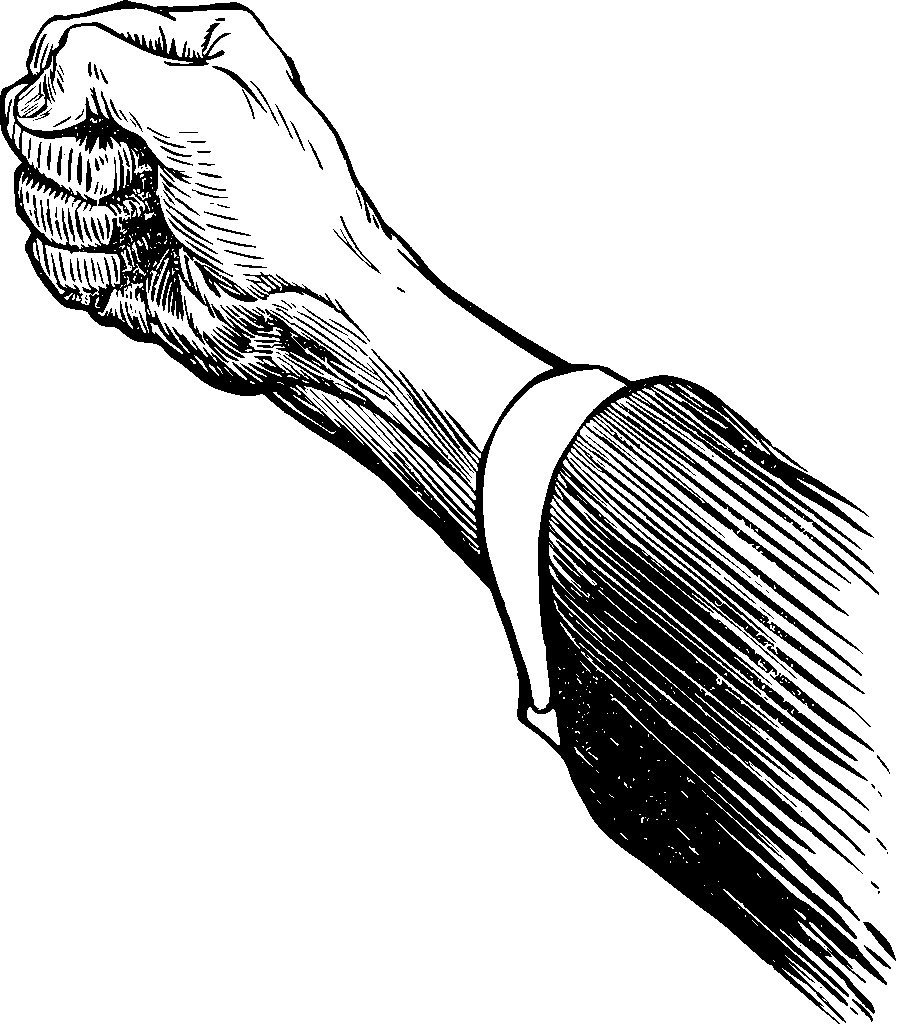
12. “Defiance”: Bringing the Bielski Story to the Global Stage
The extraordinary saga of the Bielski partisans garnered significant public attention and scholarly interest, culminating in its adaptation into popular culture. Nechama Tec’s 1993 book, “Defiance: The Bielski Partisans,” herself a Holocaust survivor, provided a foundational narrative that eventually reached a global audience. This comprehensive work served as the primary source for the American filmmaker Edward Zwick’s 2008 cinematic adaptation, simply titled “Defiance.”
The film, starring acclaimed actors such as Daniel Craig as Tuvia, Liev Schreiber as Zus, Jamie Bell as Asael, and George MacKay portraying Aron, brought the harrowing yet inspiring story of the forest community to millions. Its release significantly elevated public awareness of the Bielski brothers’ unique resistance effort, emphasizing both their military actions and their humanitarian mission of rescuing 1,200 Jews.
For Aron Bell, the movie’s widespread reception marked a turning point. While earlier books had documented his family’s experiences, the film’s powerful visual storytelling and broad reach motivated him to become an even more active public speaker. He recognized the opportunity to leverage the film’s popularity to further his mission of Holocaust education, sharing his firsthand account with a new generation and dispelling misconceptions about Jewish resistance. The film thus served not only as a dramatic retelling of history but also as a catalyst for deeper engagement with the experiences of Holocaust survivors and partisans.
Military equipment: Daniel Craig
HonorificPrefix: Commander (Royal Navy)
Name: Daniel Craig
HonorificSuffix: post-nominals
Caption: Craig in 2025
BirthName: Daniel Wroughton Craig
BirthDate: [object Object]
BirthPlace: Chester
AlmaMater: Guildhall School of Music and Drama
Occupation: Actor,producer
Yearsactive: 1992–present
Spouse: [object Object],[object Object]
Children: 2
Citizenship: United Kingdom,United States
Signature: Firma de Daniel Craig.svg
Awards: List of awards and nominations received by Daniel Craig
Categories: 1968 births, 20th-century English male actors, 21st-century American male actors, 21st-century English male actors, Actors from Wirral
Summary: Daniel Wroughton Craig ( CRAYG; born 2 March 1968) is an English actor. His accolades include two National Board of Review Awards, in addition to nominations for a Primetime Emmy Award, a British Academy Film Award, and three Golden Globe Awards.
After training at the National Youth Theatre in London and graduating from the Guildhall School of Music and Drama in 1991, Craig began his career on stage. He began acting with the drama The Power of One (1992), and had his breakthrough role in the drama serial Our Friends in the North (1996). He gained prominence for his supporting roles in films such as Elizabeth (1998), Lara Croft: Tomb Raider (2001), Road to Perdition (2002), Layer Cake (2004), and Munich (2005). Global stardom came from his portrayal of secret agent James Bond in the action film Casino Royale (2006), for which he was nominated for the BAFTA Award for Best Actor in a Leading Role. He reprised the role in four subsequent instalments of the Bond franchise: Quantum of Solace (2008), Skyfall (2012), Spectre (2015), and No Time to Die (2021).
In addition to a number of other film roles, Craig gained further recognition for narrating the documentary One Life (2011), for which he was nominated for the Primetime Emmy Award for Outstanding Narrator. He also starred as detective Benoit Blanc in the Knives Out series (2019–present) and a gay man in the period romance Queer (2024); all three earned him nominations for the Golden Globe Award for Best Actor. His other films include the fantasy The Golden Compass (2007), the drama Defiance (2008), the science fiction Western Cowboys & Aliens (2011), the mystery thriller The Girl with the Dragon Tattoo (2011), and the heist film Logan Lucky (2017).
On stage, Craig starred in the Royal National Theatre’s production of Angels in America (1993) on the West End. He made his Broadway debut in the play A Steady Rain (2009) and returned to Broadway in the revivals of Harold Pinter’s Betrayal (2011) and William Shakespeare’s Macbeth (2022). He starred as Iago in the New York Theatre Workshop production of Othello (2016).
Get more information about: Daniel Craig

13. A Difficult Chapter: Legal Challenges in Later Life
In his advanced years, Aron Bell faced a challenging and unwelcome public scrutiny that cast a shadow over his later life. In 2007, he and his second wife, Henryka, were arrested in Palm Beach on serious charges, including kidnapping and fraud. The accusations alleged that they had swindled a 93-year-old Polish-born neighbor out of more than $250,000, subsequently taking the elderly woman to Poland and leaving her in a nursing home there.
The high-profile nature of the charges, involving an individual with a heroic wartime past, drew considerable media attention. The legal proceedings eventually concluded with a plea deal, in which Mr. Bell and his wife agreed to repay the substantial sum of money. Their lawyer, in defense of the couple, asserted that the alleged victim had been suffering from dementia and had, in fact, requested to be taken back to Poland for her final years, presenting a complex narrative surrounding the events.
This difficult chapter in Aron Bell’s life, though publicly documented, stands apart from his wartime heroism and his dedication to education. It represented a personal and legal tribulation that he confronted in his advanced age, navigated through the justice system, and ultimately resolved. The incident underscores the complexities that can arise even in the lives of individuals celebrated for their extraordinary contributions.
Military equipment: Bankruptcy
Categories: All Wikipedia articles in need of updating, All articles needing additional references, All articles that may have off-topic sections, All articles with dead external links, All articles with incomplete citations
Summary: Bankruptcy is a legal process through which people or other entities who cannot repay debts to creditors may seek relief from some or all of their debts. In most jurisdictions, bankruptcy is imposed by a court order, often initiated by the debtor.
Bankrupt is not the only legal status that an insolvent person may have, meaning the term bankruptcy is not a synonym for insolvency.
Get more information about: Bankruptcy
Read more about: The $1.3 Trillion Mistake That Crippled the US Navy

14. An Enduring Message: Legacy of Love, Truth, and Resilience
Throughout his remarkable life, Aron Bell returned several times to Belarus, revisiting the vast Naliboki Forest that had once been his sanctuary and battleground. These visits were profoundly personal, allowing him to reconnect with the landscapes that shaped him and to honor the memory of his parents, who are commemorated by a plaque at their mass grave in the forest. In 2019, his continued importance as a living witness to history was recognized when he was invited to the unveiling of a monument to Jewish resistance in Moscow, where he shared a poignant embrace with President Vladimir V. Putin of Russia.
Of that encounter, his son Alan recounted his father’s words to Putin, “‘I want to thank you for taking the time out to see me,’” to which Putin responded, “that his father had told him what the Jewish partisans had done, and told my father, ‘I couldn’t have done what you folks did.’” This exchange underscored the profound impact of the Bielski partisans’ story on a global stage and the enduring respect for their courage. Mr. Bell dedicated his memoirs to his parents and his brothers, whom he regarded as true heroes, ensuring their bravery was eternally recognized.
Military equipment: Julie James (I Know What You Did Last Summer)
Name: Julie James
Series: I Know What You Did Last Summer
Caption: Jennifer Love Hewitt
FirstMajor: I Know What You Did Last Summer (novel)
FirstDate: Sun Dec 31 1972 16:00:00 GMT-0800 (Pacific Standard Time)
Creator: Lois Duncan
Portrayer: Jennifer Love Hewitt
Gender: Female
Occupation: High school student (graduated),College student (graduated),College Professor (currently)
SignificantOther: Ray Bronson (ex-husband),Bud (dating, only novels)
Origin: New Mexico
Lbl22: Status
Data22: Alive
Categories: Articles using Infobox character with multiple unlabeled fields, Articles with short description, CS1 errors: URL, CS1 maint: url-status, Female characters in film
Summary: Julie Nicole Miranda James is a fictional character in the I Know What You Did Last Summer franchise. The character was created by American writer Lois Duncan and appears in her 1973 suspense novel I Know What You Did Last Summer. In the story, Julie is a young woman whose friend group is involved in a hit-and-run accident. Actress Jennifer Love Hewitt portrayed Julie in the Kevin Williamson-scripted feature film I Know What You Did Last Summer (1997), in which she is the final girl. She returns in the sequels I Still Know What You Did Last Summer (1998) and I Know What You Did Last Summer (2025).
In 2018, Bianca Giselle portrayed the character in the musical parody I Know What You Did Last Summer: The Unauthorized Musical that premiered at the El Cid in Los Angeles. Over time, her evolving arc across the series has earned her recognition from both fans and critics as a prominent and enduring final girl. Her resilience, determination, and ability to outwit her pursuers have solidified her place as one of the genre’s most memorable heroines. Today, she remains a touchstone for discussions about the evolution of the “final girl” in modern horror.
Get more information about: Julie James (I Know What You Did Last Summer)
Read more about: Beyond the Finish Line: Athletes Who Defied Age, Redefined Retirement, and Left an Indelible Mark
Aron Bell leaves behind a rich family legacy, survived by his wife, Henryka Zaworska; his son, Alan; two daughters, Brenda Weisman and Susan Abrams, from his first marriage; two stepchildren; twelve grandchildren; and twenty great-grandchildren. Beyond his family, his most powerful and lasting contribution is the message he imparted to future generations: “Love as much as you can. Be a warrior. Be always in the truth. Pray. Be a warrior again.” These words encapsulate a life lived with unwavering courage, an unyielding commitment to justice, and an enduring testament to the human spirit’s capacity for resistance and profound compassion in the face of unspeakable evil. Aron Bell’s passing closes a direct link to one of the Holocaust’s most inspiring narratives, yet his story, infused with resilience and truth, will continue to resonate for generations to come, reminding us all of the power of heroic defiance against hatred.



